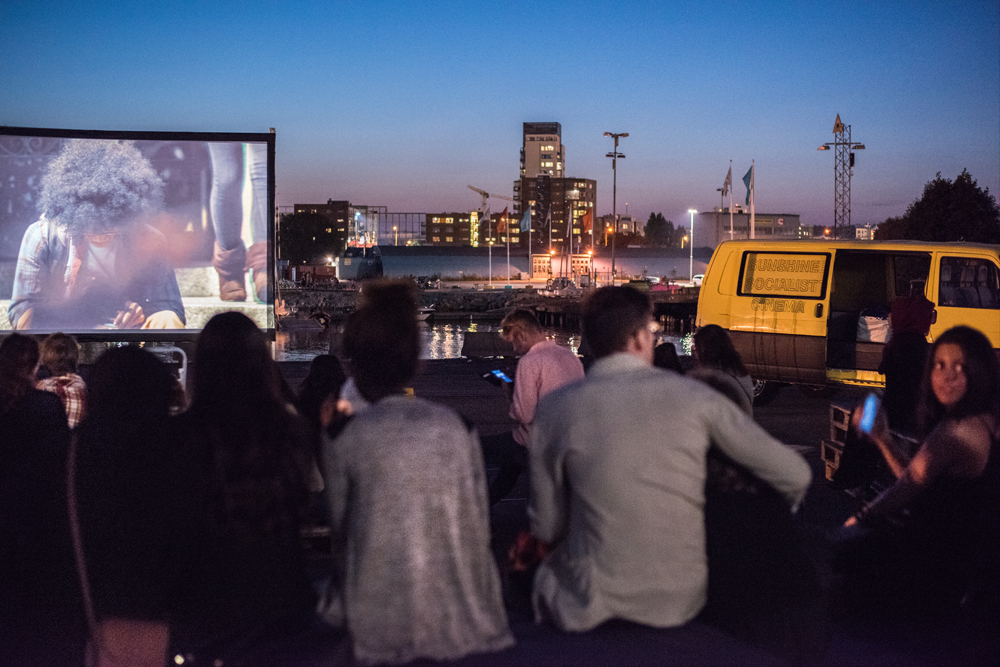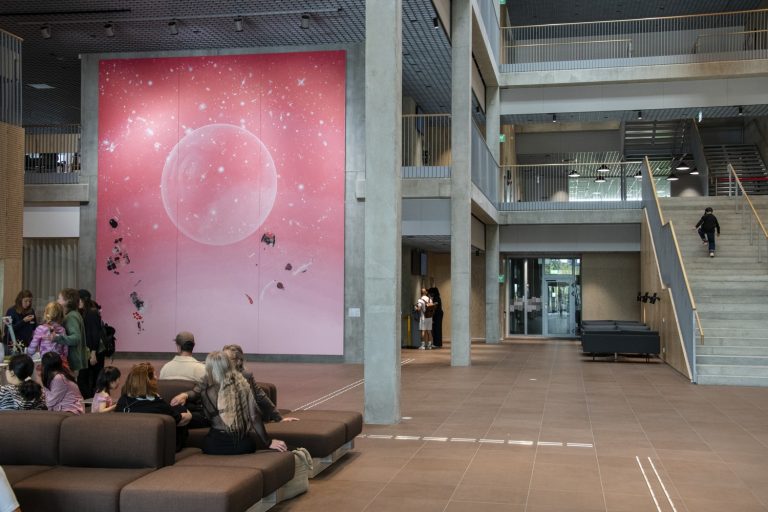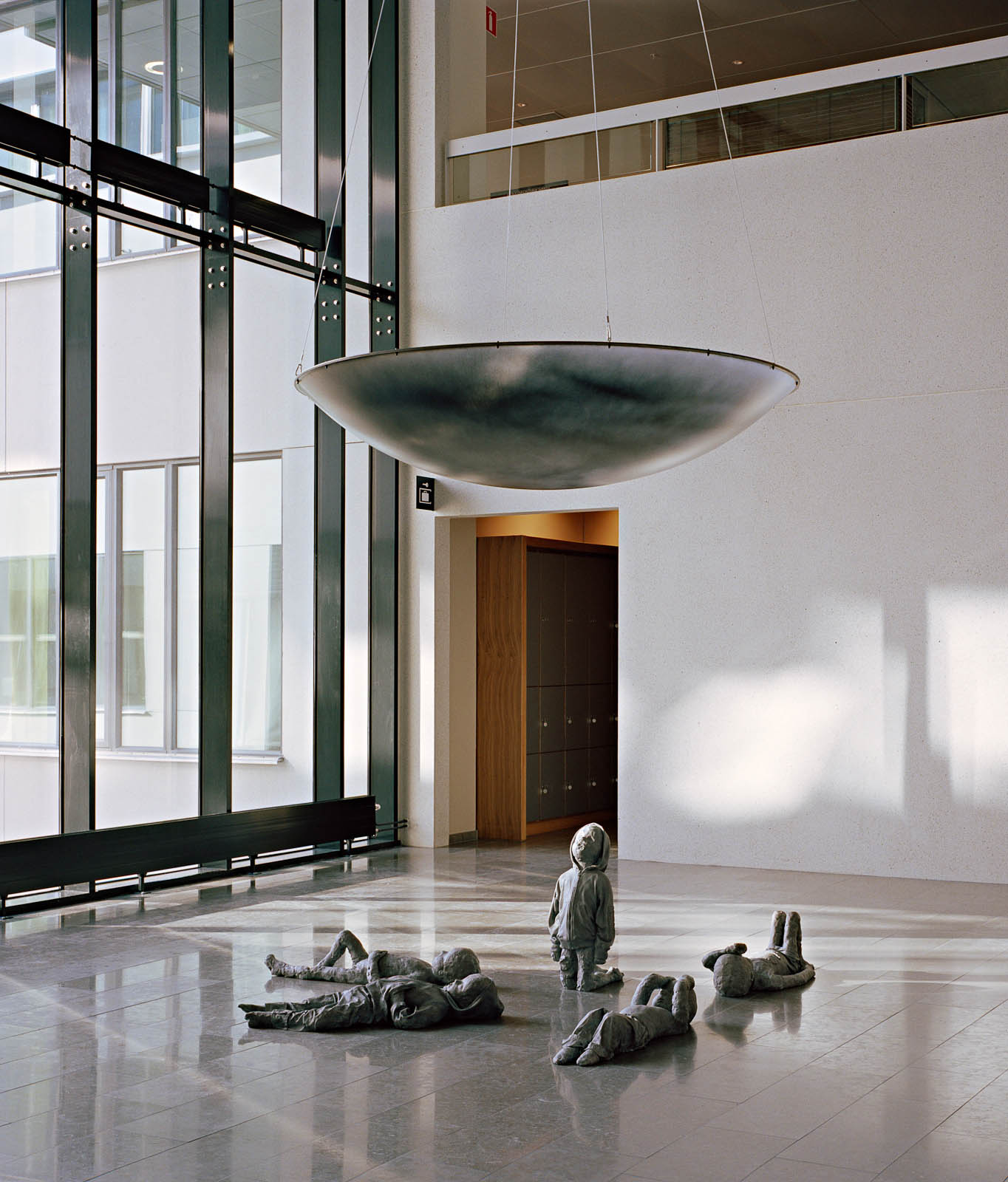A simple action can make a space both larger and smaller. Mette Winckelmann’s textile work Rörelse is fully working curtain as well as a multi-faceted textile sculpture.
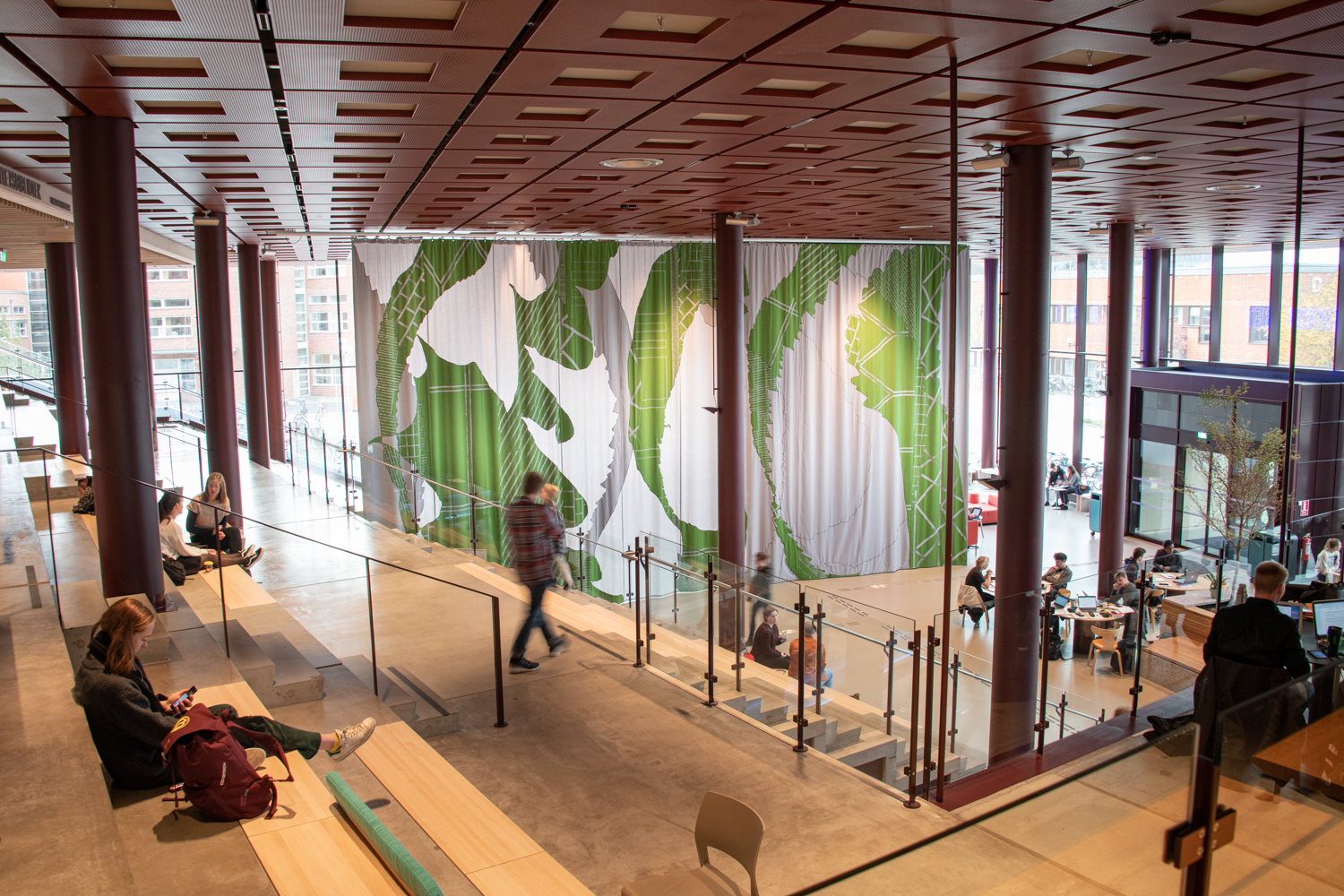
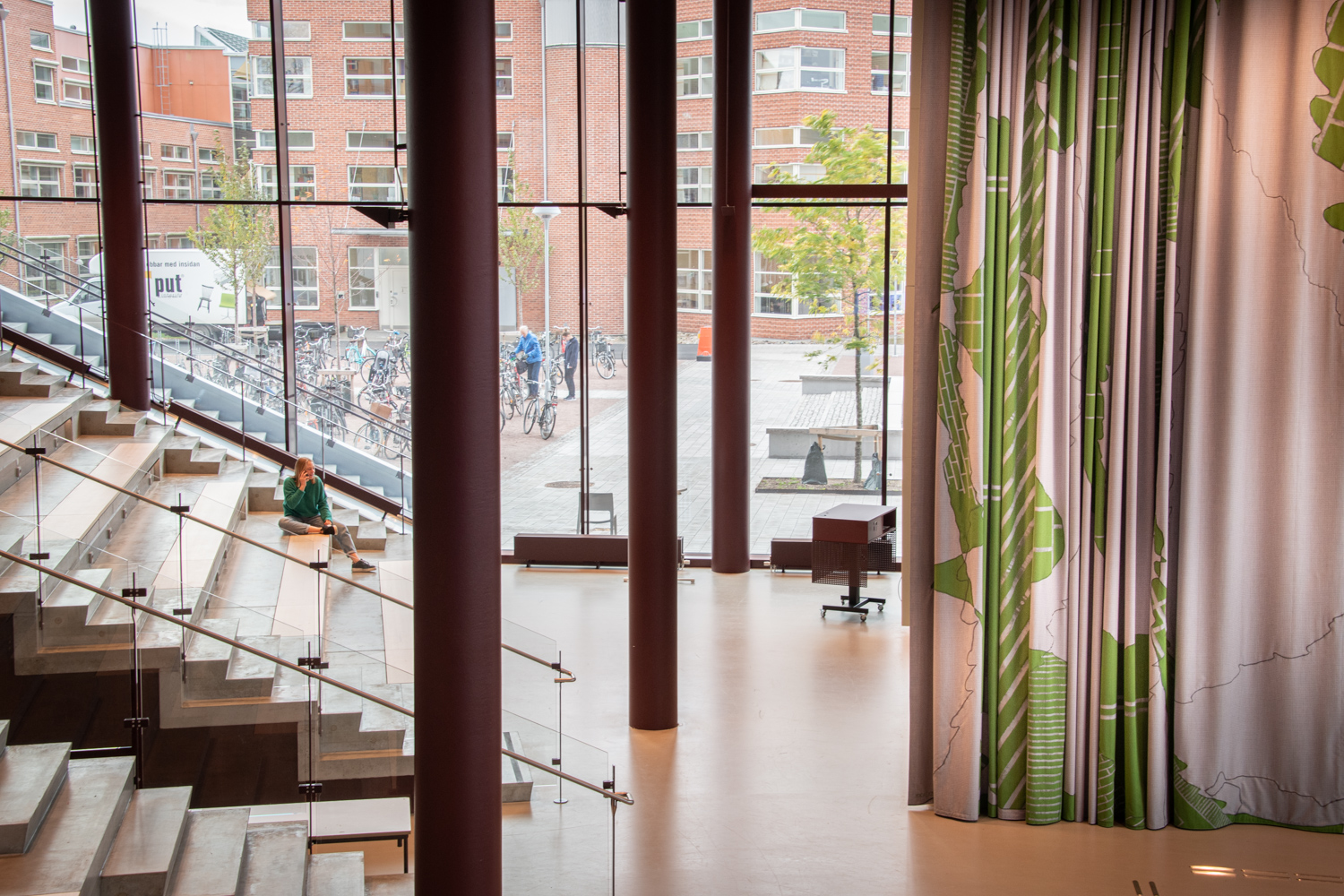
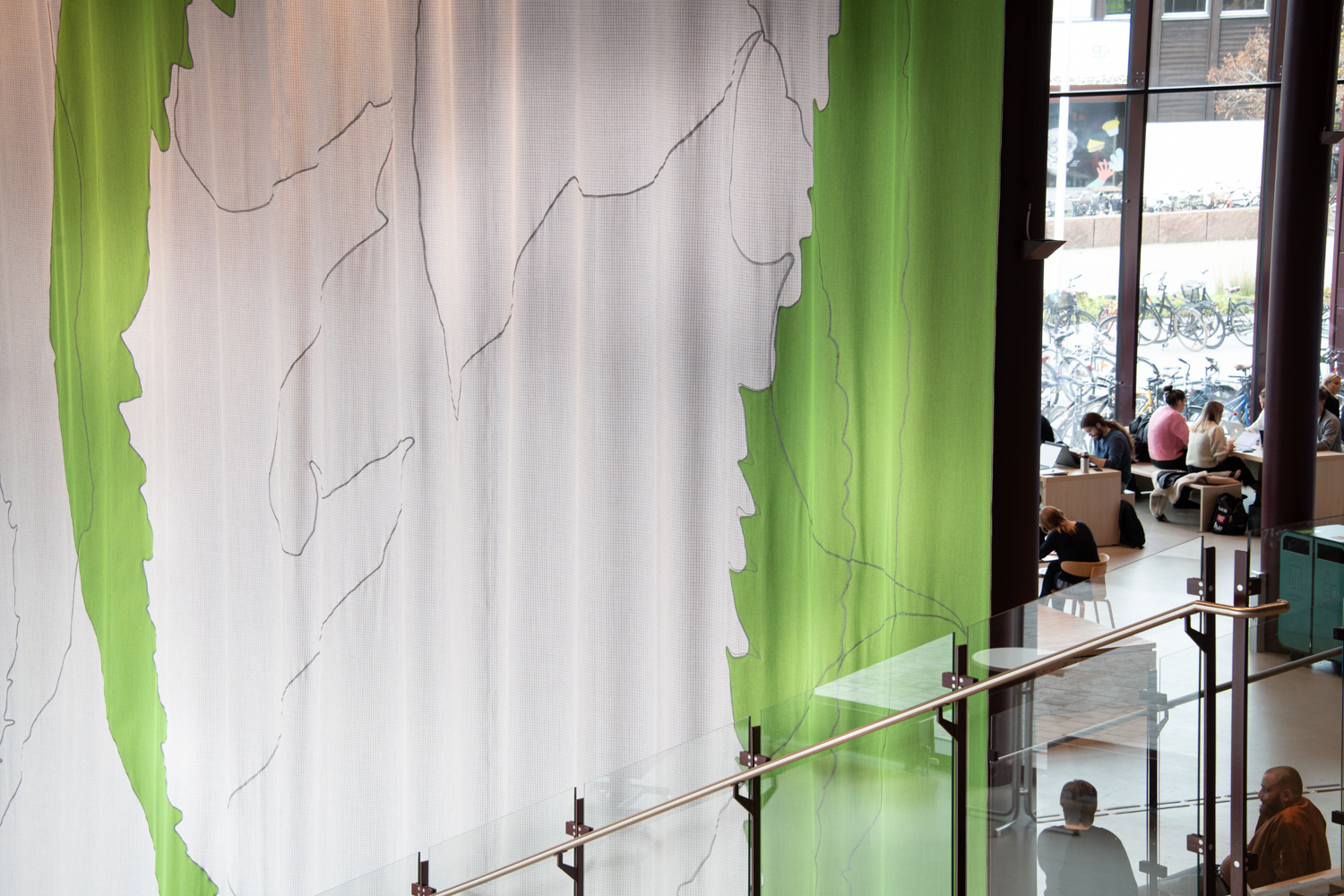
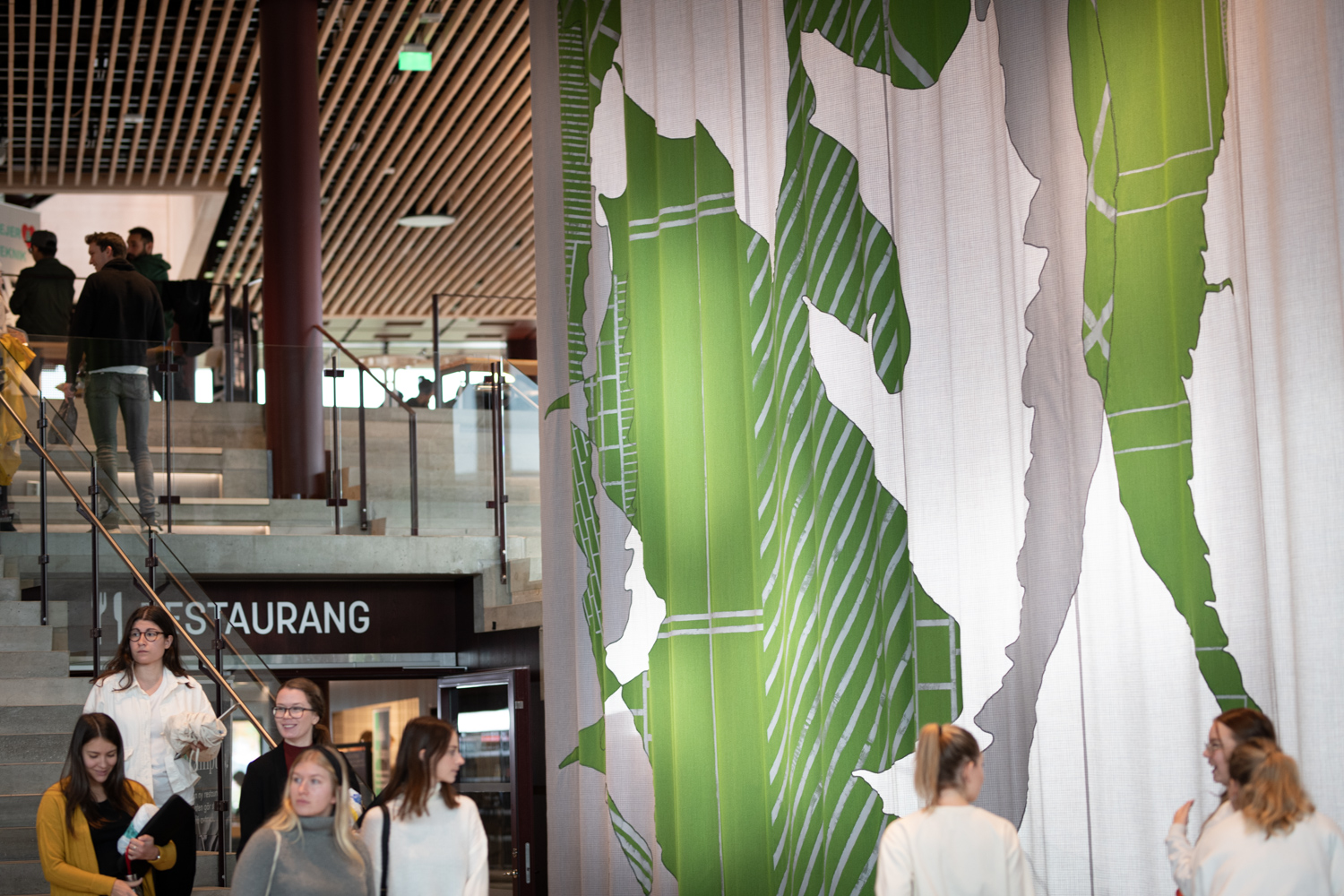
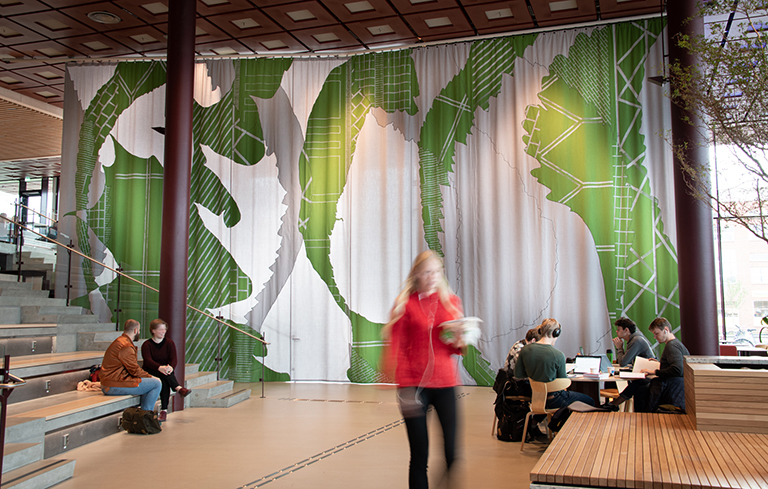





On Rörelse
Mette Winckelmann’s textile sculpture Rörelse (Movement) functions as a room divider in the entrance of the new Studenthuset at Linköping University’s Campus Valla. In addition to creating serenity and privacy, the two-sided curtain also transforms the room into a stage.
Green, grey and white connect the contemporary architecture with the surrounding plants, trees and leaves which also provided inspiration for the pattern’s organic, flowing lines. Just as the stricter “veining” of the suggested leaves has been influenced by the architecture’s pattern of repeated cubes and rectangles.
The changeable, soft sculpture is also a nod to the various cycles in its surroundings: the changes of seasons, the students’ predetermined terms and the gradual development of free thought.
The sculpture works equally well when extended to its full length as when drawn back in a more compact form. Mette Winckelmann’s abstract and playful design makes possible multiple interpretations. The changeable, soft sculpture is also a nod to the various cycles in its surroundings: the changes of seasons, the students’ predetermined terms and the gradual development of free thought.
Up close, the exquisite richness of detail also testifies to a collaboration with seamstresses from the Friends of Handicraft association and to the fruit of hard and purposeful labour.
Mette Winckelmann’s art practice is both abstract and concrete. Abstract because it resists the figurative. Concrete, because it takes its starting point in a material and physically tangible reality. With a playful, inquiring touch, Winckelmann likes to work with different materials and has repeatedly addressed complex issues in the public domain.
Curator text by Marianne Jonsson
Artist Mette Winckelmann has created a magnificent site-specific textile work for the new Studenthuset at Linköping University’s Campus Valla. A unique textile artwork, Rörelse (Movement) is a double-sided sculptural curtain measuring 7 x 14 metres and is located in the generous glazed entrance of the new Studenthuset. The curtain’s design evolved from the site; the students were an important starting point as was the surrounding nature in dialogue with the stringent architecture of the building.
Linköping city centre is gradually merging with the university with its 27,000 students thanks to new infrastructure and a new residential area at the Campus Valla. The new magnificent seven-storey building is divided into three parts. The elevated main volume, designed as a red cube, will be a symbol both for the building and Campus Valla. The Studenthuset will form the future centrepiece, heart and hub of the university and the campus area. The comprehensive vision for Linköping University is a “University of international standing – where people meet and develop”.
Taking her starting point in necessity and the site’s architecture, the artist has created a textile curtain that is both a room divider and an artwork in the multi-functional entrance space, which contains multifunctional graduated seating that connects the library with the lecture area and the entrance. A flexible work, the curtain can be used to create a space for lectures or a more secluded area for study and rest. The curtain oscillates between being an independent textile work, when it is extended to its full length during lectures, and when drawn back it is transformed into a more compact design; its leaf formations giving rise to new impressions.
The artistic vision is based on a narrative of different parallel cycles. Nature with its character and colours is drawn into the building, undergoes a process and is transformed on its way through the building. The students create a rhythm, a movement through architecture, a daily rhythm, an annual rhythm and a rhythm related to the process that everyone experiences from the first day at university to the last.
The green and grey hues of the curtain Rörelse are structured differently with varying levels of transparency. On the fundamental grey ground colour, green areas have been applied, sewn with a clear dark grey seam of varying thickness, evoking the distinctive characters of the leaves. Mette Winckelmann states that while visiting the university she collected leaves from the plants and trees around the building. These leaves inspired both the green colour and the contours of the leaves. The artist’s intention with the green is to complement the new building with something vibrant and organic, reflected by the textile material. The green textile consists of several intertwined shades, threads in green and purple symbolising diversity which at the same time represent the organic, the body, the unpredictable, the living and the individual.
For the grey, the artist has taken her starting point in the materials and structures of the university’s architecture, the double doors, the corridors and the floor coverings, and created a concrete structure with paving-stones linking the built volumes on the campus. For the curtain, the artist has chosen a grey textile with a square pattern in a grid as a base. From a distance, the colour is perceived as only grey; however, a closer inspection reveals a woven grid. The work comprises textiles of different densities and textures that create a vibrant transparency. Sewn in several layers, the leaves overlap and the contours are visible as grey lines of varying thicknesses. Visible on both sides, the seams form one of the visual elements of the drapery.
The artist’s intention with the green is to complement the new building with something vibrant and organic, reflected by the textile material.
Mette Winckelmann’s personal artistic expression can be described as both abstract and concrete. Abstract in the sense that it is not figurative or a representation of another reality and concrete as the materiality itself is such an important element of her artistic expression. She allows her fabrics, tiles and colour to speak to each other. Inspired by popular art from different cultures including the woven textiles of Navajo Indians, Swedish rag rugs and older patchworks with her patterns and colours, she aims to blur the boundaries between craft and art. With Rörelse in the entrance of Studenthuset at Campus Valla, Winckelmann continues to develop her idiom and conceptual approach.
In producing the work, the artist collaborated closely with the seamstresses of the Friends of Handicraft association, who have provided much technical and artistic knowledge for this complex work. The artist has placed great emphasis on making visible the traces and memories of the hand. The different widths and densities of the seams form grooves that create recesses in the fabric’s varying structures and denseness, in the green fabric’s differently coloured threads of green and purple as well as in the grid and transparency of the grey fabric.
Here Mette Winckelmann has succeeded in creating something as unique as a site-specific, painterly, sculptural textile work for the University. It will be viewed and interpreted based on the artist’s vision of cycles for the students, for the seasons with their different lightin.
Text by Marianne Jonsson
On Mette Winckelmann
Born in 1971 in Sønderborg, Denmark, Mette Winckelmann lives and works in Copenhagen. She studied at the Academy of Art and Design in Bratislava, Slovakia and graduated from the Royal Danish Academy of Fine Arts in 2003.
Find the artwork
Campus Valla, Linköpings Universitet
